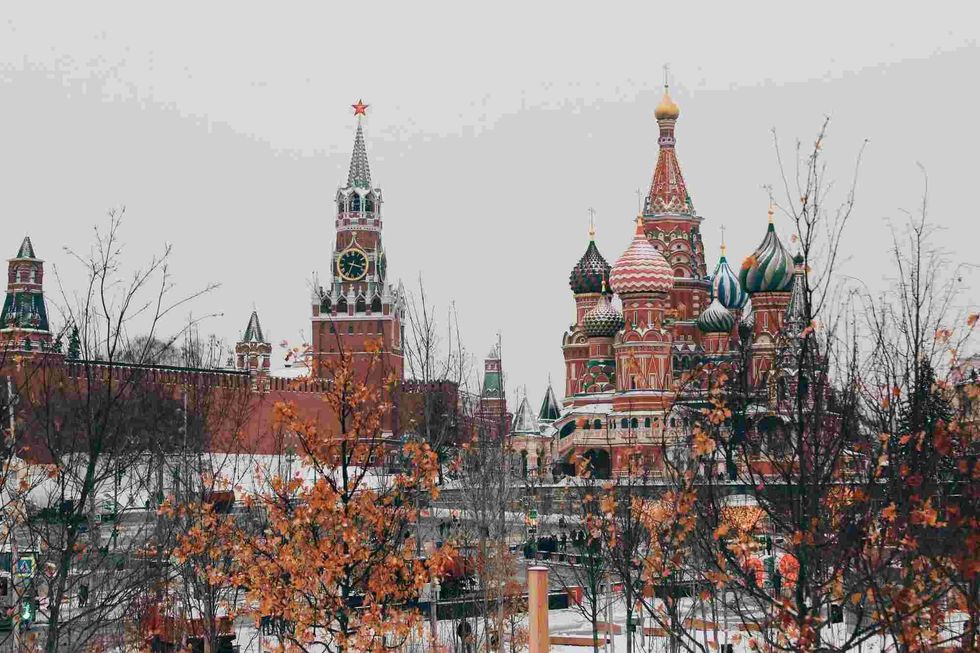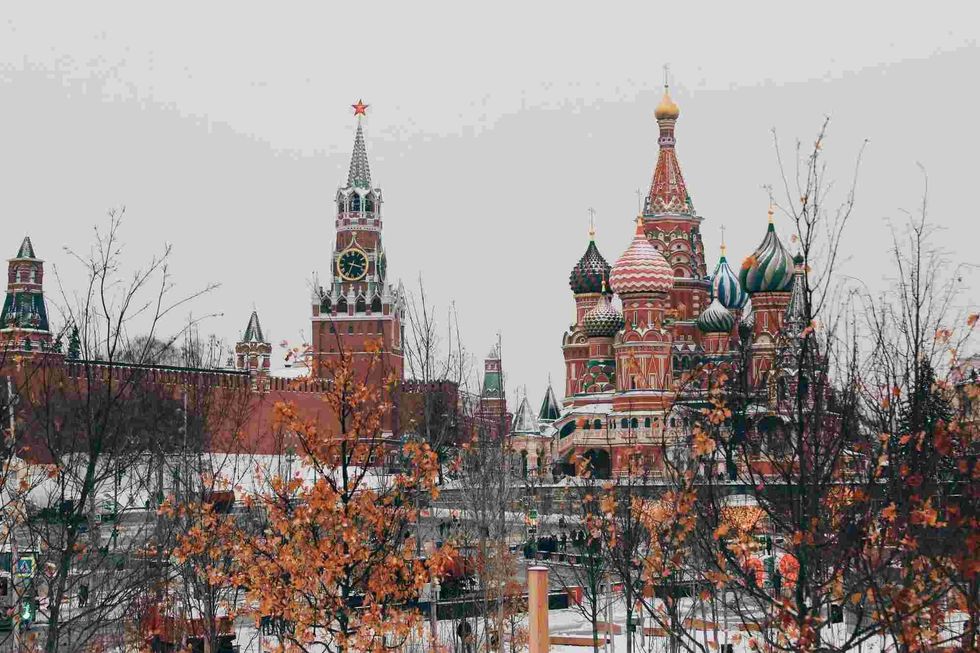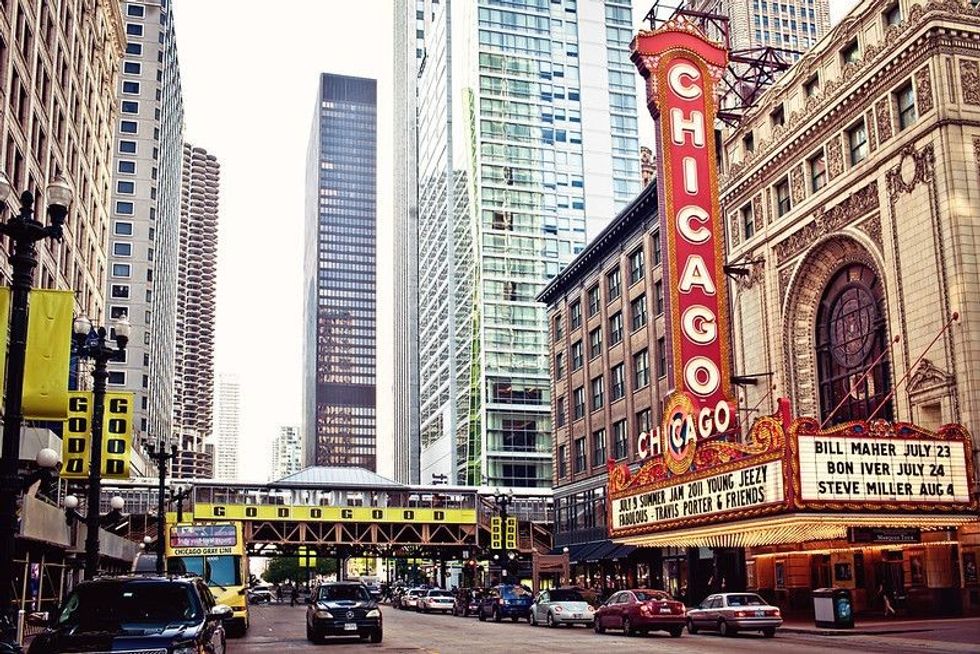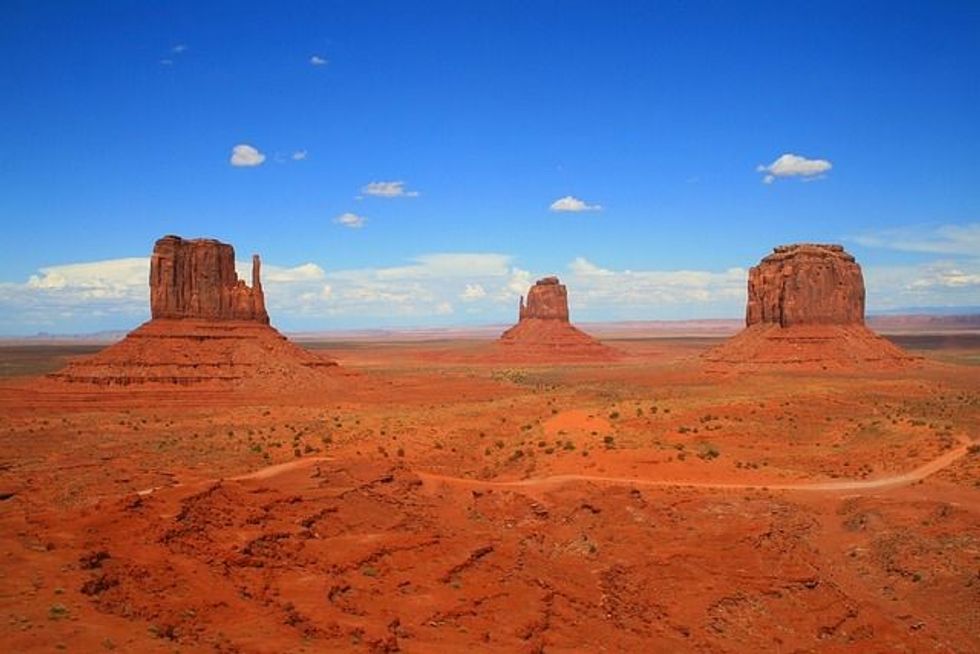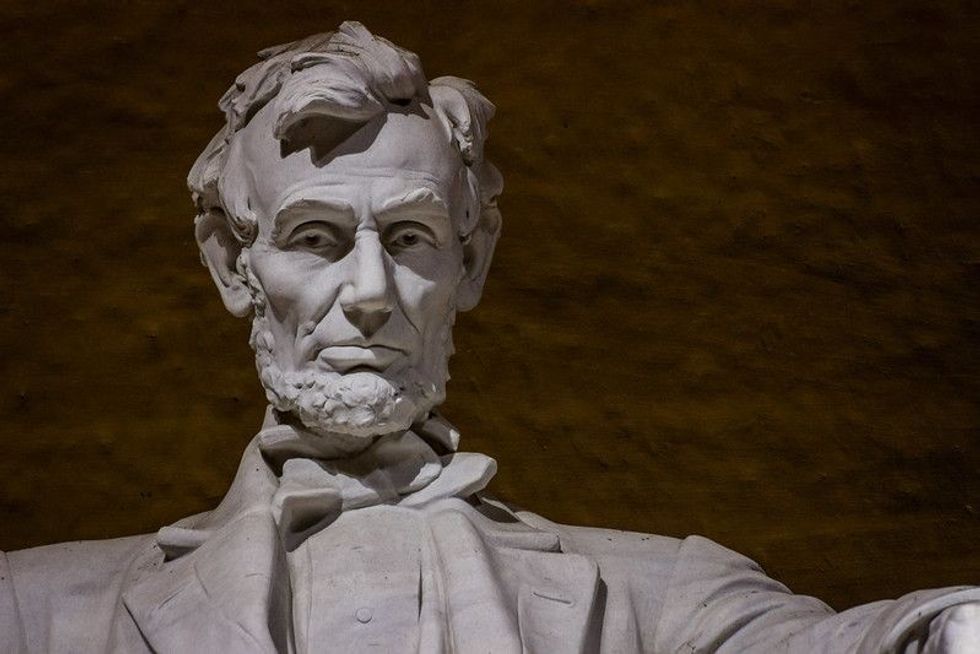Russia is the planet's largest country by area, expanding more than 6563736.6 sq mi (17 million sq km).
What makes Russia unique is that it accounts for more than one-eighth of the world's inhabited land area. It stretches over two continents, Europe and Asia, and three oceans: the Atlantic, Pacific, and the Arctic Ocean.
When it comes to having an independent country, Russia has 16 independent nations within it. In fact, the Russia map spans 11 time zones and has the largest boundaries of any country on the planet Earth.
It is the most populated country in all of of Europe and the tenth most populous country on the planet. The capital, Moscow, is Europe's biggest metropolis, while Saint Petersburg is the country's second-largest city and a cultural hub.
The Scythians and the Sarmatians were the earliest civilizations to be attributed to Russia. Russia was westernized and modernized in the late 1600s and early 1700s.
As Scandinavians went south to areas surrounding the upper Volga River, the first human settlements in Russia formed around A.D. 500. These immigrants combined with Slavs from the west to construct a fortification that would later become Kyiv, Ukraine.
For 200 years, Kyiv, or Kiev, grew into an empire that dominated much of European Russia before dissolving into Muscovy, Belarus, and Ukraine.
Until the 13th century, when Mongol incursions in the south led people to settle in Moscow, Muscovy's capital remained a tiny trade town. After pushing the Mongols out of Kyiv and consolidating the territory in the 1550s, Muscovite grand prince Ivan IV became the first Russian monarch.
Michael Romanov was crowned Tsar in 1613. At the age of 10, Peter the Great became Tsar in 1682, and for the next 42 years, he strived to modernize and europeanize Russia, walking in the footsteps of his predecessors, Ivan IV and Ivan III.
The Russian Empire was founded on November 2, 1721.
The Romanov dynasty-controlled Russia until 1917 when Russia became a country. Russia has been a nation for 104 years as of 2021.
Following Napoleon's defeat, Russia became a major power that dominated Europe. Russian serfdom was abolished by Emperor Alexander II in 1861, but the peasants fared miserably, and revolutionary forces intensified.
The famous Russian Revolution of 1917 was ignited by a mixture of economic collapse, military fatigue, and dissatisfaction with the authoritarian political structure of the king. The collapse of the monarchy first placed a combination of liberals and moderate socialists in authority, but their unsuccessful policies led to the communist Bolsheviks seizing power on October 25, 1917.
The Bolsheviks, led by Vladimir Lenin, established a communist government.
Russia was taken out of World War I by the new administration. In a civil war, some Russians battled the communist group, the Bolsheviks, and the Bolsheviks were victorious.
If you like reading about the history of Russia and the Russian empire, you should read further to learn about them in detail. You could also check out our other articles on Colombia history facts and Ghana history facts.
Russia: Geography And Landscape
Russia is a transcontinental country with enormous swaths of land spanning Europe and Asia. It stretches across the northernmost region of European Russia and boasts the world's fourth-longest coastline, comprising southern Russia, western Russia, and northwestern Russia.
The Ural Mountain region, the Moscow area, and the Volga region make up Russia's major land regions. The history of Russia is the reason why it is the biggest country, as, like many other European countries, Russia underwent territorial expansion.
The Russian Far East is the country's easternmost region, which is between Lake Baikal and the Pacific Ocean. It comprises Lake Baikal and the Beyenchime-Salaatin crater, among other famous historical places.
There are nine main mountain ranges in Russia, all of which are located in the southern areas. When you consider Russia's connections to over thirteen marginal seas, it borders three oceans.
Russia has one of the greatest natural water reserves in the world, with its lakes comprising around one-quarter of the planet's liquid freshwater. It also has over 100,000 rivers.
Lake Baikal, Russia's biggest and most accessible freshwater body, is the world's clearest, largest, oldest, and deepest lake. Lake Baikal holds more than one-fifth of the globe's fresh, natural water.
In terms of overall renewable water and natural resources, Russia is second only to Brazil. The Ural Mountains, spanning the Arctic Ocean to the Caspian Sea, are said to be the dividing line between Europe and Central Asia.
The fact that much of Russia's geographical area is not economically usable is the most important characteristic of its economic geography. A vast majority of the country is uninhabited. Tundra with permafrost covers the majority of the geographical area. These factors make it difficult for these places to thrive.
Due to its enormous area, Russia has a diversified habitat, including tundra, polar deserts, taiga, forest-tundra, forest-steppe, mixed and broadleaf forest, subtropics, steppe, and semi-desert. About half of the Russian landscape is forested, and it contains the world's biggest forest reserves.
The Russian landscape has been dubbed the 'Lungs of Europe' because of the quantity of carbon dioxide they absorb, second only to the Amazon rainforest.
Russia's Wildlife And Nature
Russia's forest and nature reserves are home to a number of rare animals that live in its woods, steppes, and tundra, including snow leopards, polar bears, Asiatic black bears, and tiny, rabbit-like mammals known as pikas.
The first national parks in Russia were established in the 19th century. Strict nature reserves, known as zapovedniks, have been constructed to assist in safeguarding and restoring the country's natural beauty.
The Siberian tiger, currently the world's biggest tiger, is Russia's most famous animal. These endangered giants, which are native to the woods of eastern Russia, can grow to be around 10 ft (3 m) in length and can weigh up to 661.3 lb (300 kg).
The Russian fauna includes about 732 bird species, 320 mammalian species, and over 30 amphibian species. The Russian Red Data Book contains over 1,100 endangered and rare animal and plant species.
Russian People
Approximately 80% of Russians trace their roots back to the Slavs who arrived in the nation thousands of years ago. Other significant ethnic groups in Russia are the Tatars and Ukrainians, who arrived with the Mongol conquerors after the Mongol invasions.
According to a 2010 census, Russia is one of the globe's most sparsely settled yet most urbanized nations, with a population of 142.8 million in 2010 and an estimated 146.2 million in 2021. It is Europe's most populous country and the ninth most populous country on the planet.
According to the United Nations, Russia has the world's third-largest immigrant population, with over 11.6 million people, mostly from post-Soviet republics or from the Ukrainian city.
Russian People And Culture
Russian is the official and most commonly spoken language in Russia, especially among the Moscow population. It is Europe's most widely spoken native dialect, Eurasia's most extensively used language, and the world's most widely spoken Slavic language.
Russia's constitution declares it to be a secular state, while Christianity is the country's most popular religion. It has the largest Orthodox population in the world.
In Russia, Islam is the second-most popular religion. Rubble is the Russian currency in use. Russia's national anthem is the 'State Anthem of the Russian Federation'.
The history of Russia, its geographical position and enormous extent, religious traditions, and Western influence have all influenced the country's culture. Russian philosophers and authors have had a significant influence on the development of European philosophy.
Film, classical music, sport, ballet, art, and architecture have all been strongly impacted by Russians, which is what makes Russian culture interesting. The country has pioneered advances in science and technology, as well as space exploration, and boasts 30 UNESCO World Heritage Sites, 19 of which are cultural.
Russian literature and Russian music are often regarded as some of the most influential and developed in the world. Writers like Fyodor Dostoevsky and Leo Tolstoy, ballet dancers like Rudolf Nureyev, and composers like Pyotr Ilyich Tchaikovsky are among Russia's most famous intellectuals and artists.
Bandy is Russia's national sport, and the country has a long history of supremacy in the sport. Football is effortlessly one of the most popular sports in Russia.
Russian Economy And Government
Russia's economy is diverse and has vast natural resources, notably oil and natural gas. It has the 11th-largest nominal GDP and the sixth-largest PPP economy in the world and has a figuratively low unemployment rate of 4.5% and a poverty rate of 12.6%. Russia has the world's fifth-largest foreign exchange reserves, valued at $604 billion.
It has a workforce of almost 70 million people, making it the sixth-largest in the world. Russia has the world's 10th-largest automobile sector in terms of production and is the 14th largest auto exporter in the world.
Russia has a constitutionally mandated free education system for all inhabitants, and its constitution offers all Russian residents free, universal health care through a mandatory state health insurance scheme.
Beginning in March 1918, the Soviet Union's government was founded on the one-party dictatorship of the Communists, as the Bolsheviks were known at the time.
However, with the inadequacies of the Soviet economic and political systems becoming evident by the mid-1980s, Mikhail Gorbachev started on massive reforms, which finally led to the collapse of the communist party and the disintegration of the USSR, leaving Russia on its own for the first time in its history.
During the infamous Cold War, the Soviet Union emerged as a challenger to the United States and a superpower after playing a critical part in the Allied triumph in World War II. The Russian Soviet Socialist Republics were renamed the Russian Federation after the disintegration of the Soviet Union in 1991.
A new constitution was enacted in the aftermath of the constitutional crisis of 1993, and Russia arose as a federal semi-presidential republic since then.
According to its constitution, Russia is an asymmetrical federation with a capital and a semi-presidential republic, with the prime minister as head of government and the president as head of state. The Russian government is primarily organized as a multi-party democratic republic, with three branches of government, legislative, executive, and judicial.
According to the constitution, the Russian government is made up of 85 federal subjects. Vladimir Putin is Russia's current Prime Minister.
Here at Kidadl, we have carefully created lots of interesting family-friendly facts for everyone to enjoy! If you liked our suggestions for Russian history for kids then why not take a look at ancient Greece history facts or Belgium history facts.

